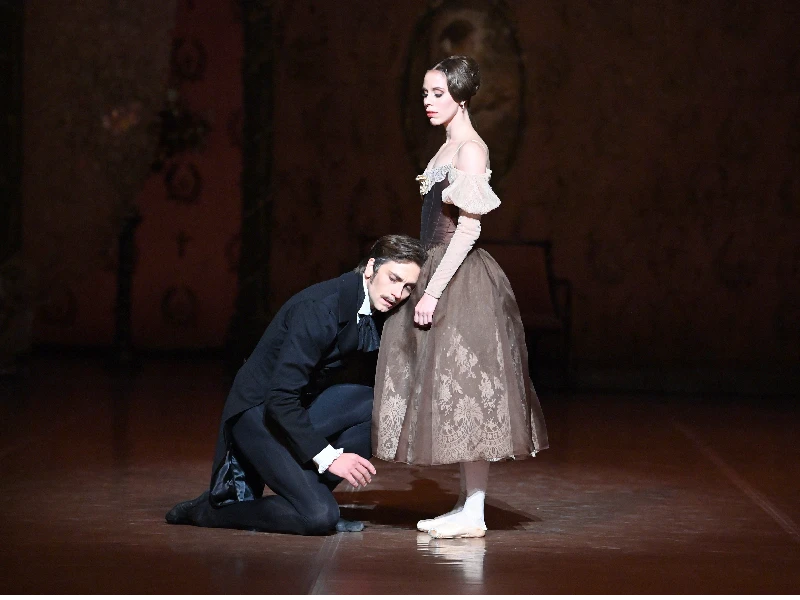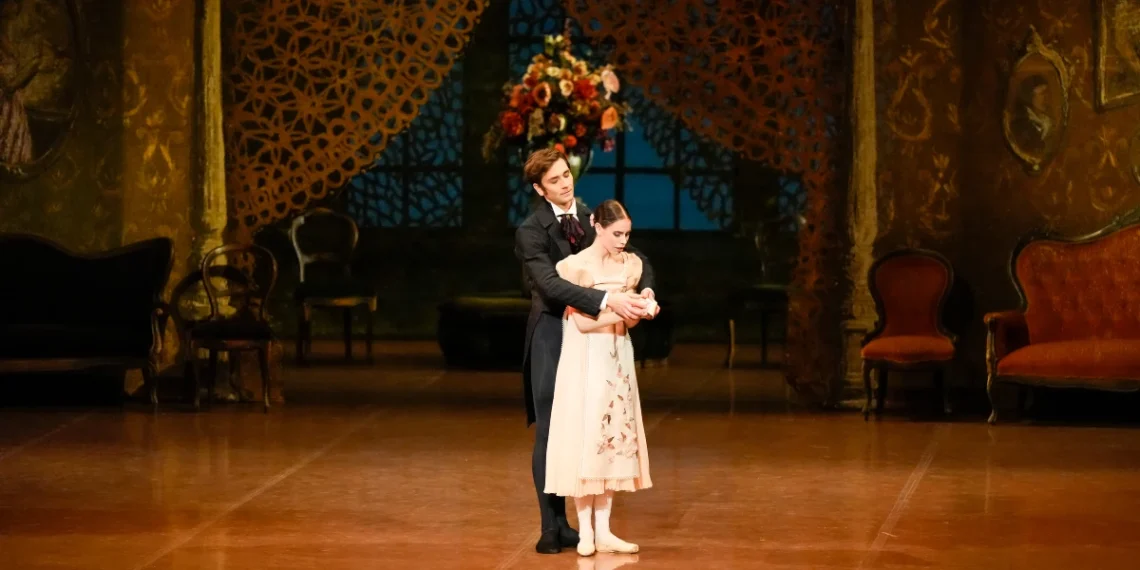This fall, the Kennedy Center welcomes back a long-absent yet beloved guest: the Stuttgart Ballet. After a 33-year hiatus, the acclaimed German company returns to Washington, D.C. with one of its most iconic and emotionally resonant productions – John Cranko’s Onegin.
The ballet, based on Alexander Pushkin’s novel in verse, is a masterwork of dramatic storytelling and psychological depth. Taking on the title role in Onegin is no small feat. The character is complex – aloof, tormented, and ultimately tragic – and demands a dancer capable of conveying nuanced emotion as much as physical mastery.
An international ballet superstar and principal dancer with Stuttgart Ballet, Friedemann Vogel, known for his magnetic stage presence and refined technique, has danced the role around the world to critical acclaim.
As he prepares to bring Onegin to American audiences on opening night at the Kennedy Center, Vogel, in this interview, reflects on the role, the legacy of Cranko’s choreography and what it means to perform this landmark work on such a momentous occasion.

You may also like...
An Interview With Beckanne Sisk & Chase O’Connell: La Vie en Rose
Take a deeper look into some of Beckanne Sisk & Chase O'Connell's unique experiences and decision-making that come with having such richly intertwined lives.
An Interview with Diane Lee: Making Freelance Moves in NYC
Charmingly sweet and filled with determination, Diane Lee discusses her atypical journey back to dance and what her days as a freelance artist are like.
Interview with Friedemann Vogel
‣ Onegin is such a complex and emotionally charged role. How do you prepare physically and emotionally to inhabit a character as conflicted as he is?
Onegin is the ballet that inspired me to become a dancer, and I grew up watching it at the Stuttgart Ballet. After years of performing Lensky, it was a dream come true to finally dance the title role!
The starting point, as always, is to find empathy for my character; so in hindsight, I’m glad the role came later in my career when I had more life experience to draw from.
Physically, lots of rehearsals of course, and it definitely helps to have Cranko’s vocabulary as part of our DNA in the company.
To prepare for the role, I also immersed myself in Pushkin’s source material to dive deeper into Onegin’s personal journey and the historical context, while exploring ways to keep the story resonant for today’s audience.
Onegin is one of the most coveted roles, performed by so many great dancers. My goal is to inhabit this conflicted character with authenticity and make the interpretation my own.
‣ Stuttgart Ballet hasn’t performed at the Kennedy Center in over three decades. What does it mean to you personally to be part of this historic return?
Earlier this year I danced Onegin with the Rome Opera Ballet. I also performed the final pas de deux at several galas. But in 2025, as we celebrate its 60th anniversary, dancing Onegin with the Stuttgart Ballet – the company Cranko created it for – feels especially meaningful.
Because it is such a timeless classic, my hope and belief is that decades from now, Stuttgart Ballet will still be performing Onegin worldwide.
‣ John Cranko’s choreography demands both technical precision and deep dramatic nuance. How do you balance those two aspects in your portrayal of Onegin?
When it comes to technical precision, there is no shortcut – you have to put in the hours to rehearse, especially the two pas de deux with Tatiana.
When the choreography is this intricate, the partnership must be super tight, and the steps need to be so ingrained, we don’t think about them anymore; then we can just focus entirely on the storytelling.
Additionally, with the ballet spanning many years, and given Onegin’s fascinating character arc, technical precision provides the basis for an in-depth emotional interpretation.

‣ You have danced Onegin in many countries and with different partners. How does your interpretation evolve with each new performance?
The magic of live performances is that each show is unique.
I don’t like repeating myself, so I try to keep things fresh by really living each moment on stage. The chemistry is different with different partners, and every theatre also brings its own energy.
For me, dancing in narrative ballets is really about responding to the others, so different facets of Onegin might emerge in each performance, although the choreography remains unchanged. It may be nuanced, but the difference is there.

‣ The final pas de deux is considered one of the most powerful in classical ballet. Can you describe what goes through your mind during that climactic moment on stage?
Onegin is filled with anguish, passion, and desperate hope. Winning Tatiana back is his last chance at redemption, so in that moment, I am giving everything I’ve got to express his deep remorse and fervent plea for her love. When she rejects him, he’s left utterly shattered – stunned, ashamed, totally destroyed. Hopefully, that comes across in my performance.
‣ Cranko’s Onegin has become iconic in the Stuttgart Ballet’s repertoire. What do you think makes this production resonate so strongly with both dancers and audiences?
It might be a cliché, but “the one that got away” – true for both Onegin and Tatiana – is something many people connect with. Onegin begging for a second chance is very relatable, but even more remarkable is Tatiana’s resistance.
It comes down to Cranko’s skilful portrayal of temptation, struggle, and resolve, making Tatiana’s final decision feel very honest and also reflective of women’s growing empowerment to choose their own paths.
As for dancers, performing Onegin is simply a dream! From the demanding choreography to the complex characters, Onegin truly stretches us both as dancers and as actors. Cranko tells the story so vividly just through movement, without a single word. It’s pure genius, and so fulfilling for dancers.
‣ What do you hope American audiences take away from the performance?
The arrogant Onegin suffering from ennui at the beginning is a very different man from the wiser but devastated character we encounter in the last act.
Through Cranko’s extraordinary – almost cinematic – choreography, I hope the audience gets drawn into the narrative from multiple perspectives. As artists, we want to create unforgettable moments that leave the audience moved, more empathetic, and above all, inspired.
Featured Image of Friedemann Vogel and Elisa Badenes as Onegin and Tatiana in John Cranko’s Onegin. Photo by Roman Novitzky, courtesy of The Stuttgart Ballet.










